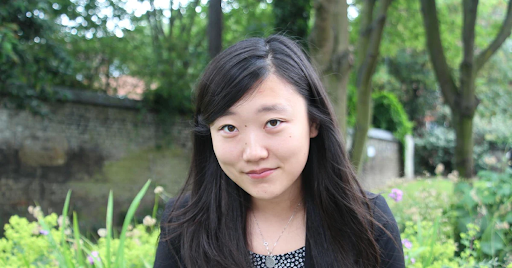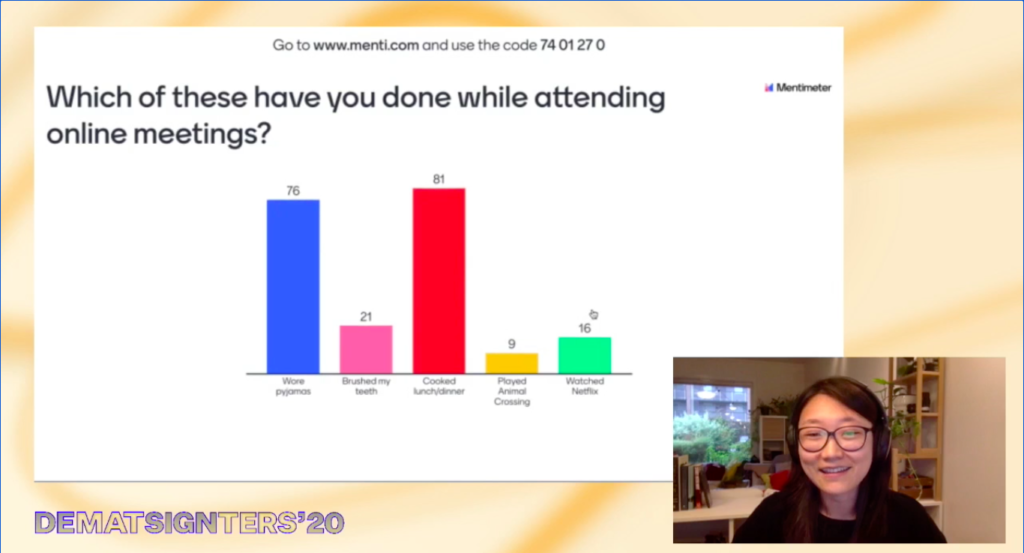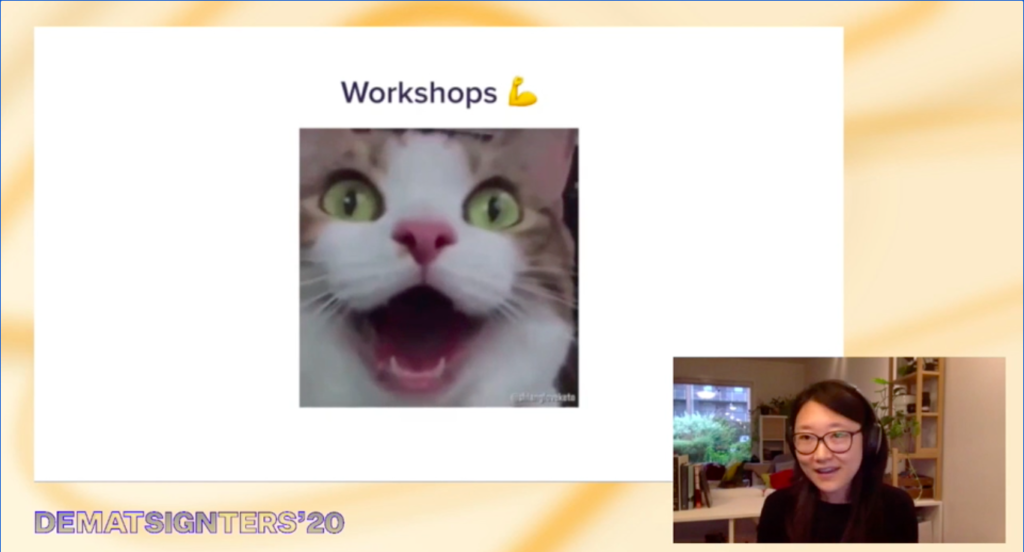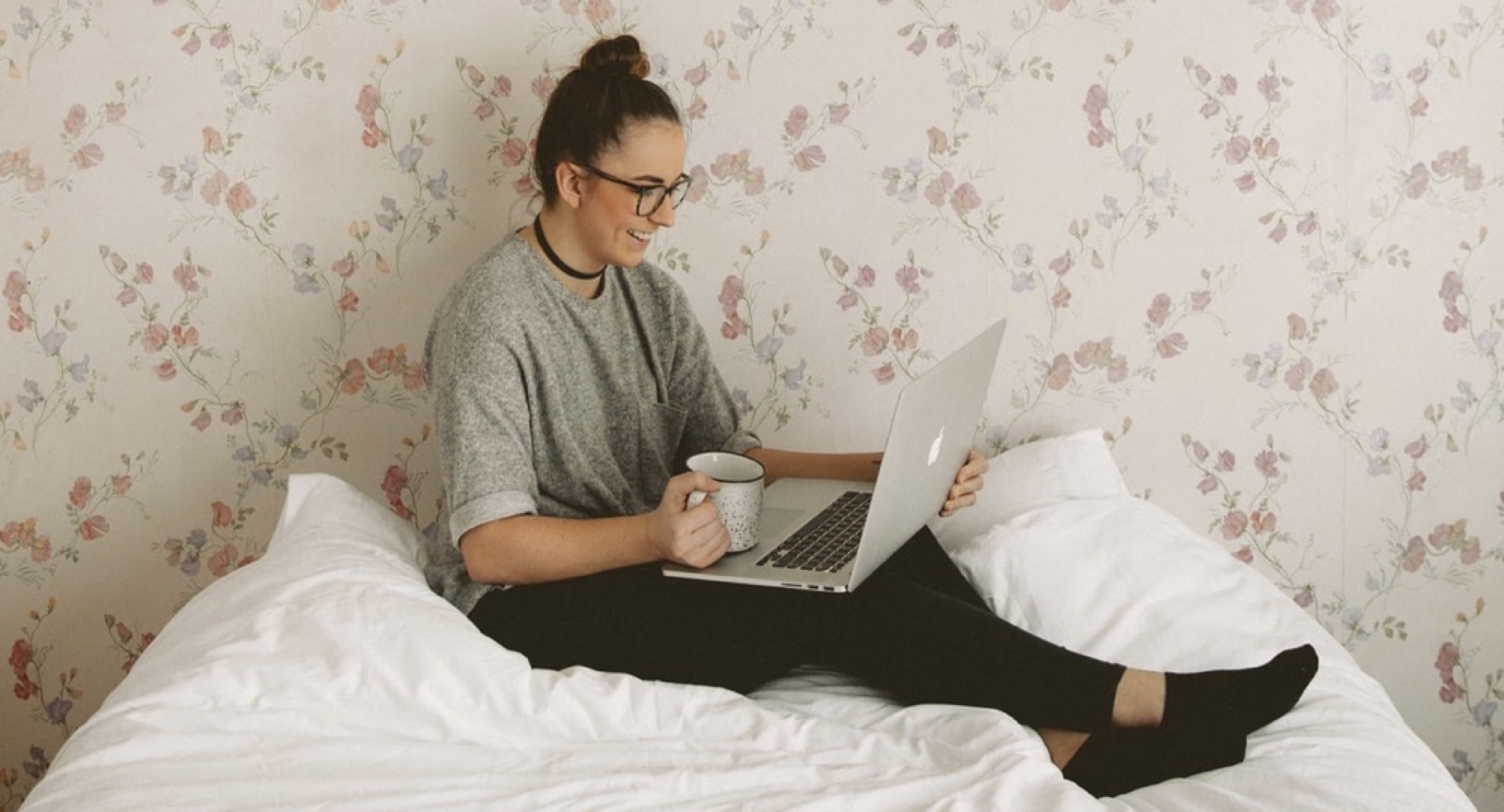Kea Zhang, Director of Product Management and UX at UserTesting (formerly Teston), is a master collaborator. No stranger to brainstorm sessions, design thinking workshops, or user-testing feedback meetings; she has been at the forefront of the global shift to digital collaboration even before Covid-19. Appropriately, Kea was a virtual presenter at Design Matters ’20, where she spoke about The Future of Workshops, and how some things work even better remotely.

We sat down (virtually) with Kea to talk about the differences between remote and in-person collaboration, and to gain some insights into how to host workshops that will capture and hold the attention of our attendees. Kea told us about some of the yet-to-be-invented digital tools on her wishlist that would help with some of the pain points of being remote, while also giving advice on how to make sure that everyone, no matter how shy, felt equally included in the remote collaboration process.
What do you find are some of the assumptions or misconceptions that people bring into remote collaboration?
This is a great question to start with. I have noticed that there is an invisible barrier to remote collaboration because people have a feeling that remote collaboration is harder than in person collaboration, and in some ways, it is. We are so comfortable with the physical tools we use for face to face collaboration, so for people who aren’t used to remote collaboration it can be a bit daunting to learn. In a way, everything on a video call is harder: it’s harder to connect with people, it’s harder to get feedback, it’s harder to establish relationships in general. So those assumptions, though sometimes true, are a massive barrier.
“But, remote collaboration is not as hard as you think.”
It is true that you don’t have a physical whiteboard or sticky notes; but we do have pretty great digital whiteboarding tools. And yes, it is harder to keep people engaged but it is not impossible. There are actually a lot of similarities and inspiration to be found within physical collaboration methods and frameworks. A lot of transitioning into remote collaboration is just about finding the energy to take the leap and cross that barrier. You can make it work.

Also, setting the right patterns of inclusive behaviour for your remote collaborations is much more important. When you are meeting together in the same space, face to face, it is very noticeable if someone is looking uncomfortable because you are able to read facial cues and body language. So on that level, with in-person collaboration, it is easier to manage equal participation and engagement, making sure that everyone is contributing and being heard. That is much harder on a call.
On a call it is much easier to make false assumptions, skipping introductions or ice breaker activities. I would say: don’t skip those things and don’t make those assumptions — really make the effort to make everyone feel included from the very start. This inclusion is really what is going to have a great impact on the sort of outcomes you will have in your remote collaboration.
“So many of us are trying new things, working on new projects, and working with new people this year. In order for us to all have good long term outcomes and relationships it is really important to just make sure everyone feels included.”
You spoke a little bit already about how those assumptions might hinder the remote collaborative process, but do you have any insight about if or how some assumptions might actually help the process?
I think a lot of us end up not crossing that barrier because we are drained from this year being really exhausting. But those people who have crossed that barrier, who are making that leap and doing the research, are very open to learn and try new things. Thus, they may be more readily available to accept feedback, which I do think will allow our industry to really improve our remote collaboration processes.
“There is a lot to learn from each other and from ourselves on that journey towards better remote collaboration.”
How do you feel the attitudes and behaviors towards this remote collaboration have changed since March, when many countries first went into lockdown?
I think what I am noticing now is a lot more people are warming up to remote collaboration. In the beginning people were very hopeful that it would be short-term; so they were more in the mindset of riding it out, and maybe not running remote workshops because they thought they were going to take a lot of extra work. Now we are nearing the end of year, and hopefully vaccines are coming very soon, but who really knows when this is really going to end? So I think overall people have become more open to it, and are sharing and experimenting more.
I remember at the beginning of your presentation at Design Matters ’20 you conducted a Menti poll that playfully illustrated the scale at which people are distracted during remote meetings and workshops. You know, people are brushing their teeth, people are watching Netflix. Could you elucidate a bit more some of the tips or tricks you have seen, or you yourself have employed, to get your attendees to be more fully engaged in the collaborative process?

I think the first thing I want to mention here is that you probably just can’t. You can’t expect to keep everyone fully engaged. I think you can hardly do that when you are even meeting face to face, and remotely you just need to drop that expectation. Change your thinking to ‘how can I ensure that people are engaged when I really need them to be engaged?’ With that in mind I think there are a bunch of different things you can do. For example the Mentimeter tool is great because you can set lots of different types of questions and even if not everyone is engaging actively, they are watching and reflecting on it because it is interactive.
Sometimes it is also important to ask yourself what level of engagement you actually need. What is your goal here? Do you actually need people to engage in giving you active responses, or is it enough for them to passively take in the information? Having a clear goal in mind is really important.
It is also really important to set the scene and warm up with a good activity to get everyone in the right mindset. If everyone is having fun and is engaged at the start of the meeting it is much more likely that this energy will carry into the rest of your meeting.
Other things that I like to do are really typical design thinking practices. If you are running a workshop activity or doing some type of brainstorming in groups, give them some time to work individually first. That is also one of those inclusive behaviors: accounting for people’s preferences with how they think and work. There are also a bunch of activities that you could run as a group or convert into individual activities. For example, affinity mapping is typically a group activity that actually works well individually when digital.
Thinking a bit more about the logistics: what tools do you feel are missing right now to help with remote collaboration?
What I think is missing revolves around the activities that supplement the actual workshop. For example, integrating more energizer/warm-up aspects into the tool. There are a lot of great tools available and it is quite easy to mix and match but I would love to see a tool that thinks beyond the whiteboard to be a bit more holistic. If I had to come up with a ‘dream tool’ it might be a random generator for ice breaker and warm-up activities…almost like the Giphy extension for Slack. You could say ‘this is what I am looking for, this is the outcome I am hoping for, this is how many people I have, this is how much time I have, etc’ and it would randomly suggest an activity. I think that would be great because, I know it sounds silly, but it really does make a big impact on your meeting, especially if you are working with people you are not so used to working with. So I think it would be really nice to bring in all of these ideas from different places to have a bit more inspiration.

In your talk at Design Matters, one of the very first things you mentioned was not to force people to put on their video if they didn’t want to. I found that to be very contrasting to what I have experienced with most video calls and I found it quite refreshing. Do you feel that you have any pushback in either direction about this?
I try to frame it as a personal decision because there are so many people out there who believe you should always have video on, and I wanted people to know that you can totally be successful without it. But as a facilitator you have to have thick skin because you may be seen but you might not necessarily see others, and you are likely to receive way fewer cues. I think it is okay to encourage people to turn on their cameras but not mandate it; just reminding everyone that it is okay either way.
I know from in the past some of these remote meetings where most attendees had their cameras off, I would just wonder ‘Are they even there? Are they listening?’ But when we would start an activity everyone would be super active…so I guess I have had enough experiences to know that they will still be engaged with video off. It is very much about knowing your team, so those cases where you don’t know people well might benefit from video.
What do you feel will take us to the next step of remote collaboration?
I don’t know if there is any one thing but just a mix of everything we have already talked about: awareness, energy, recognition of the importance of these inclusive practices. I am really excited about what will happen when this pandemic is over, because I think remote work is here to stay. I think we will see some interesting ideas of how we can work asynchronously, and with a mix between remote and physical. Maybe when all of this is over there will be more energy for us to be experimental and creative.
Great thank you so much for your time. Is there anything we haven’t talked about today that you might want to share?
I think we covered everything, but just to make this extra, crystal clear: it is really important for every company and individual to focus on inclusive behaviors when working in remote collaboration. When you do research for a workshop put in the effort to figure out how you can be inclusive — especially if you are working with a new team or with people who don’t really know each other. If you are working with an existing team you can also check in with each other for social meetings just ensure you are still connecting on a human level. If you have these personal relationships, warm-ups and icebreakers are less important.
My company invested in inclusive behavior training, and it was great to make sure that everyone was on the same page. You can even run this yourself as a workshop with your team by reflecting on your own practices and asking one another ‘What can we do better?’ There are some really basic things that came out of that training, for example, when you invite someone to a meeting, remember to write an agenda so that everyone can prepare and the meeting can have good outcomes.
“It is as simple as that: an inclusive practice that can easily be implemented for a lot of impact.”










